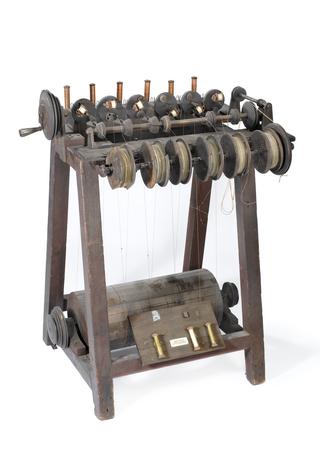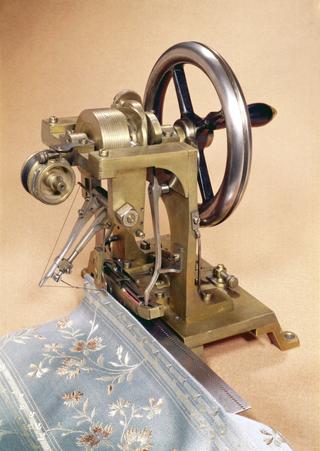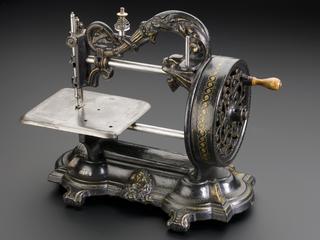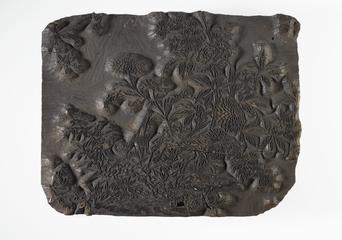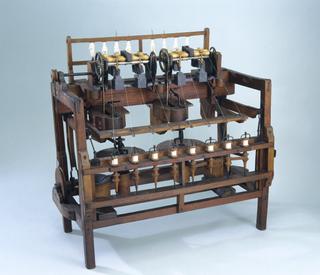
Model (scale unknown) of contemporary ribbon loom, using Jacquard principles




















































Model (scale unknown) of a contemporary ribbon loom using the Jacquard principles, by James Heywood, Coventry, England, 1870.
To make patterned cloth, a loom weaves together different-coloured threads into a design. In a Jacquard mechanism, the instructions for which threads to weave in each part of the design are contained in a series of cards with holes punched in them. The punched cards control which threads in the warp are raised, a job previously done by a weaver’s assistant.
This is, or was, reputed to be the smallest working model figure loom in the World. The designer and maker of the model was J. Heywood of Coventry and Wooten-under-Edge; the inventor of the Self-Adding Cylinder for the Jacquard machine. The ribbons are figured so that two series of weft threads are used. The lower shuttle forms with the warp the groundwork of the ribbon. The other series of silks mounted at the top, form the design. A jacquard machine at the top of the loom frame, controls the shedding of the warp threads for each pick. The most noteworthy aspect of the loom is that the shuttles are always under control of two small-geared pinions per shuttle, which gear with pin teeth formed on the shuttles.
Details
- Category:
- Textiles Machinery
- Object Number:
- 1911-346/8
- Materials:
- metal (unknown), paper (fibre product), lead (metal), textile and wood (unidentified)
- Measurements:
-
overall: 790 mm x 600 mm x 430 mm, 11.99 kg
- type:
- jacquard loom model

